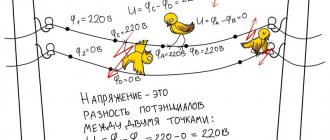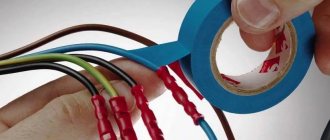Low-level electric shock when exiting a vehicle is a common problem. To prevent an unpleasant effect, it is necessary to determine the reasons.
Among the most common:
- Accumulation of static electricity by humans. Everyone knows the effect of electric shock when using a plastic comb. The same thing happens with a car. A man in clothes made of natural wool is in a car, interacting with objects located in it. Static electricity accumulates and the car shocks when leaving the passenger compartment.
- Accumulation of static electricity in a car. The reasons why this may happen vary.
If the cause of the electric shock is human clothing, it is enough to coat it with an antistatic agent or spray it with water from a spray bottle. In this case, static electricity will stop accumulating.
Automotive electricity
When moving, the car accumulates an electrical charge from contact with air. In cold weather or high humidity, the charge strength decreases. The warm season intensifies the charge.
The person inside also has electrical potential. The difference is the charge value. If the plus and minus touch, the machine receives an electric shock. If the charge value is the same, nothing bad will happen.
The reasons may be more significant. Friction or hyperfriction can damage electrical wires. The insulation is damaged and exposed areas come into contact with the car body. It turns out to be a kind of capacitor of impressive dimensions.
Harm and danger of the situation
Although at first glance it seems that a static discharge will not cause much harm, you should take a closer look at this problem. When the car body is shocked, a small discharge occurs. A clear example, however, of a different nature, is the piezo lighter.
But if for some reason there are vapors of a flammable substance, such as gasoline, inside the car? This micro-lightning can ignite them, and the consequences of this can be very serious.
Therefore, the question of what to do when the machine is electrocuted should be decided immediately. There is one more extremely important circumstance. While driving, the car driver constantly performs a number of functions. He controls the car, turns on/off various devices - direction indicators, windshield wiper blades, toggle switches for side lights, low beam, high beam. The driver constantly changes gears when the car has a manual gearbox. And if during this action a shock of static electricity occurs, it may suddenly lose control, which is fraught with dangerous consequences.
Troubleshooting options
To fix the problem, you should:
- Visit a service station . It is recommended to stop by at the first sign of an electric shock. Mechanics will diagnose the problem, fix it and give recommendations for proper prevention.
- Use antistatic strips . The mechanism varies depending on the vehicle. Massive fuel tankers wrap the body with a metal chain, the end of which touches the asphalt. Owners of small cars attach commercial antistatic strips.
- Pay attention to the interior trim . Use special car covers that prevent the accumulation of electricity or change the interior or use protective materials. Both solutions are effective. Covers are chosen by supporters of maximum savings, and changes in upholstery are chosen by connoisseurs of comfort.
- Humidify the air . Spray protective aerosols into the cabin or use other mechanisms.
Important! Humid air protects against the accumulation of static electricity, and also further improves the well-being of the driver and passengers.
Why does the car give an electric shock?
There is nothing supernatural here and everything can be explained by the laws of physics. This happens due to the accumulation of a charge of static electricity, and it is formed due to the electrification of such elements:
- car body;
- clothes;
- seat covers or upholstery.
In spring and summer, the car is electrocuted more often, since electrification occurs more intensely at low air humidity. Although such a discharge is not very pleasant, it is absolutely safe for a healthy person.
Static electricity accumulates on the car body due to its friction with the air. This usually happens while driving, but it also happens when parked under the influence of wind. When a person touches the body, for example, closing a door, the charges of the body and the body are equalized and an electric shock occurs. The reason for this may be clothing or covers. During their friction, a static charge also accumulates and the described process is repeated.
Another reason for this problem is a car malfunction. If the electrical wiring is damaged, the wires may become exposed and come into contact with metal parts of the body. The machine turns into a large capacitor and when touching its body, a person receives a noticeable electric shock.
Sparking does not cause increased voltage as long as no inductance is included in the circuit. It is dangerous when high-voltage wires, ignition coil windings and relays are exposed.
Video: why a car gives an electric shock
Electrical appliances
Some readers are probably interested in the question: what to do if an electrical discharge passes in close proximity to the vehicle’s electrical appliances. Despite the insignificant impact force, under unfavorable circumstances the devices may fail.
First of all, this applies to automotive devices. A sprayed aerosol increases air humidity, improves well-being and protects devices from accidental failure.
At first glance, the loss of a device is not as bad as the ignition of a flammable substance sprayed into the air. However, disruption of the correct operation of the vehicle device leads to unpleasant situations, including a possible loss of control over the vehicle.
Important! Get regular maintenance. According to independent studies, this reduces the risk of emergency situations when driving a vehicle and significantly reduces the risk of road accidents.
Electrostatic charge hazard
For many car owners, this becomes a real problem to such an extent that when leaving the car, they lower the sleeves of their sweater or shirt, and only in this way, protecting the exposed parts of their hands, close the door.
We cannot put up with all this and we need to look for solutions. And to find them, you first need to understand the cause of static electricity.
In the vast majority of cases, this is precisely static, and not damage to electrical wires or their breakdown.
Such a discharge, of course, will not kill a healthy person, but if such a spark slips through electronic devices, it may well damage an expensive part.
Imagine if a breakdown occurs while refueling a car near an open gas tank flap?
So, in addition to unpleasant physical sensations, ignoring this problem sooner or later results in more serious consequences.
Additional Information
The accumulation of static electricity cannot be considered a dangerous phenomenon if properly protected from it. In regions with high air humidity, this danger can be almost completely neglected. Static electricity hardly accumulates and the problems associated with it disappear.
The same applies to cases of rare use of the vehicle. The car moves little, electricity does not accumulate and the risk of an accident is significantly reduced.
However, it is still better to use additional means to protect against the accumulation of electricity. This is equally true for a car and for a person.
For example, if the driver prefers to wear shoes with rubber soles, it is recommended to use antistatic insoles for grounding. Don't forgo other safety enhancements.
The main causes of electric shocks from the car body
There are several options for storing charge on the driver or on the car. Let us say right away that the version popular on the Internet that the charge is gained from air friction on the car body is false. This theory states that the dirtier your car, the more static charge it will pick up as you drive. Most likely, the myth was invented by some car wash owner, since the degree of contamination of the car does not in any way affect the build-up of static charge.
The real reasons that can cause such a charge to accumulate and subsequently be released onto your fingers are quite simple. And it won’t be difficult to eliminate them either. Typically, car owners face the following problems in this case:
- the driver's clothes rub against synthetic covers, a static charge appears on the driver;
- the electrical system in the car is faulty, there are breakdowns in the body that cause static current discharges;
- there is no discharge of static energy using antistatic tapes and other tools.
What else do you need to know?
If none of the above helps and the vehicle continues to shock its owner, remember the rules for getting out of the car.
After opening the door, you should touch the metal part of the vehicle with your foot and only then step on the ground. This will help relieve accumulated static voltage and increase the safety of using the vehicle.
Another feature is to regularly clean the interior of additional sprayed substances. This preserves the health of the driver and passenger and protects them from gasoline vapors and other flammable substances. The safety of using a vehicle should be first and foremost.
Antistatic strips are recommended to be changed regularly in accordance with operating requirements.
Important! Some vehicle owners prefer to save money and not buy additional protective equipment. This is an undesirable strategy; the owner pays for small savings in security.
How to properly install an antistatic device in a car?
The first option for protecting against electric shock in a car is a regular antistatic agent that needs to be sprayed on the seats and clothing. By doing this, you will reduce the likelihood of charge accumulating directly on the driver or passengers. If this does not help, you should move on to the next steps.
It would also be a good idea to check the car's electrical system. A charge can be given to the engine by faulty spark plugs, which spark directly onto the engine body, as well as broken high-voltage wires. It is worth keeping the engine itself clean, because the charge can be transferred through a layer of adhering liquid. But the main method of getting rid of static shock in a car is to organize the following protection options:
- special antistatic tapes to remove static charge from the body;
- for large cars with an increased risk of fire or explosion, antistatic chains made of metal that conduct current well are used;
- sometimes a ground wire is used as an antistatic agent, which is attached with a terminal to the body, and the second edge is cut off, allowing the wires to drag along the ground.
Of course, the most convenient option is to use antistatic rubber strips, which are attached to the rear of the car and do not spoil the appearance. But their production requires expensive conductive rubber. This makes the cost of the tapes quite high, which is why there are a huge number of fakes on the market. To avoid such counterfeits, choose expensive rubber antistatic tapes from well-known manufacturers.
Many drivers buy rubber bands with wire inside. This way out of the situation helps to get rid of static charges only for a certain time, because the wire quickly rusts or oxidizes and ceases to perform its functions. It is also important that the tape is not screwed to the bumper, but rather to a metal part of the body. In this case, the paint at the fastening site must be stripped down to metal.
True, there are tips in the “life hack” style from Internet users, as in the following video:
Factors influencing the accumulation of static charge on the body
Among the main factors “contributing” to the formation of static voltage, it should be noted:
- Reduced humidity of the surrounding air (which can be observed quite often both in summer and winter).
- Wearing clothes and shoes made of synthetic materials. As practice shows, the sole of boots made of genuine leather very effectively prevents the formation of “static”, and on the contrary, rubber, caoutchouc or polyurethane help retain the charge on the surface of the human body.
- Operation of the car air conditioner. Yes, it cools the air inside the cabin, but at the same time “dries it out” significantly.
- Individual properties of the organism. For some, the static charge accumulates to a greater extent, and for others, to a lesser extent. For example, a husband is constantly electrocuted by a car, but his wife practically does not experience any negative influence. Even though they use the same car.
There are several ways to combat static voltage. We will talk about some of them later in our article.
Let's sum it up
You can remove the unpleasant effect of static current discharges from your car with your own hands, without spending a lot of time and money on it. It is important to ensure that the vehicle's electrical system is fully operational and then ensure that the accumulated energy is dissipated through antistatic tapes. To do this, you need to purchase high-quality devices that will actually discharge the charge, and not just drag along the asphalt behind the car.
By applying all the above tips, you can forget about the fact that the machine is electrocuted. Have you had similar situations in your life, and how did you solve a similar problem?
How to solve a problem
What to do if the car is electrocuted? First of all, you should find out the reasons for this phenomenon. If you choose natural clothing and prefer high-quality covers, and electricity still occurs, even if the car is not moving, then it is probably just a problem with the electronics.
And if you think that you can easily fix them yourself, then you are very mistaken: firstly, you can only aggravate the situation, secondly, rough intervention can provoke more serious damage, thirdly, one awkward movement can lead to a severe electric shock . So it is better to seek help from an experienced and qualified specialist.
If everything is in order with the electronics, then the following tips will help fix the problem:
First of all, change your clothes. If possible, choose things made from natural materials that not only do not conduct current, but also perfectly evaporate moisture and allow air to pass through, which will provide you with maximum comfort while driving. The covers must be of high quality and preferably made from natural materials or at least combined ones, in which cotton predominates. The same goes for the steering wheel attachment. By the way, you can do without it (the plastic from which the steering wheel is made is not as good a conductor as other materials). Purchase an antistatic strip. It is usually fixed in the lower part of the car body and must certainly touch the ground. Such a seemingly simple device will accumulate current passing through the body and drain it into the ground
But it is important to choose a high-quality antistatic strip made from modern conductive materials, since an inexpensive one may not cope with its tasks. Certain tactics for getting out of the car will also help. If you change the usual sequence of actions, you can avoid electric shock
So, many people first get out of the car and then close the door, feeling the charge of electricity. But you can do it differently: open the door, first touch it with your hand (certainly the metal part), and then put your foot on the ground. Thus, the current will go out of the car into the ground, and you will not feel anything. To enter a car safely, you can first touch it with a part of your body covered by clothing or some accessory, such as a bag.
Now you are not afraid of electric shocks, and you will be able to get out and into the car without fear.











